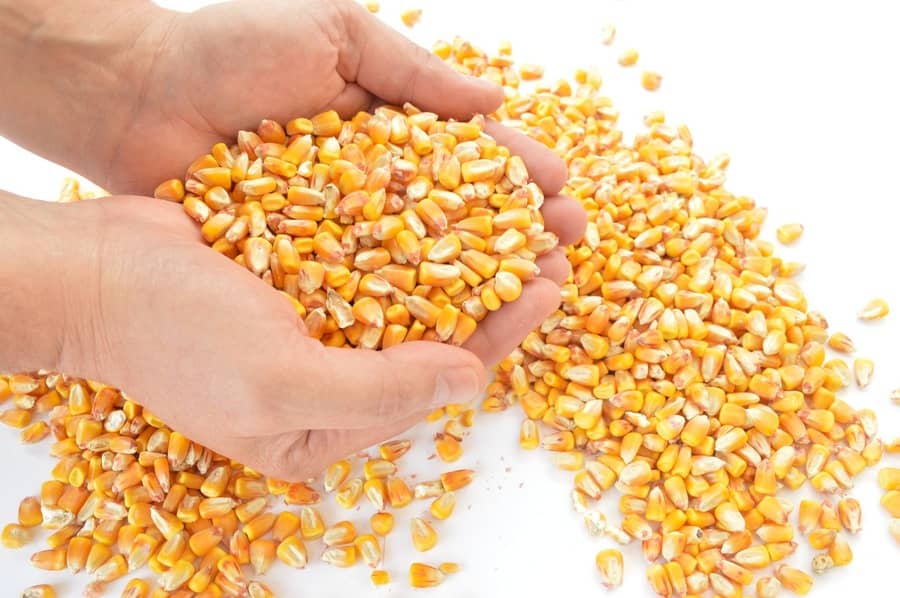Porto Alegre, October 24, 2023 – When fundamentals are not followed and funds and banks dominate price management, markets register movements like those seen last week. Halfway through an almost record harvest, corn broke the USD 5.00/bushel barrier over the week, without a clear reflection of the fundamentals that led the market to this type of movement. The weather in Argentina, in the middle of October, cannot be the factor justifying this type of movement during the period. Some rise in oil and wheat helps. However, without a doubt, the market on the CBOT continues with artificial support that ignores fundamentals and tries to put prices above USD 4.70/bushel, even with a poor pace of US exports and with the logistics situation beginning to deteriorate. Meanwhile, Brazil sells and meets a large part of the world’s demand, which should come from the United States.
The US harvest was 45% complete last week and is expected to reach 55/60% at the beginning of this week. The approaching end of the US soybean harvest should contribute to a stronger pace for corn at the end of October and beginning of November. There are 382 mln tons reaching the market in a discreet way via exports and without internal indicators that justify the absence of harvest pressure on the CBOT.
New factors that may suggest this artificial price support refer to the “new fact,” that is, the war in the Middle East, which involves additional attention to and concern about oil, as long as growing countries are involved in this problematic environment. Oil went to USD 88/barrel, of course, with repercussions for fuel prices and support for ethanol production and prices in the United States. The maximum use of corn for ethanol has been 145 mln tons to date within a business year and, currently, USDA projects 142 mln for the 23/24 season. Could it reach historical volume with the current oil price situation? That is always possible, but the increase in demand would only be 3 mln tons.
On the other hand, there is also the export environment. US sales cannot exceed 1 mln tons a week. Despite slightly better sales last week, the pace is weak and clearly reveals the switch of part of the US export demand to Brazilian corn by importers, also as a reflection of the negative expectation regarding the draft of the Mississippi River. The fact is that the harvest will still have 50% of the expected production arriving at warehouses for the next two weeks and with a low flow of exports.
At the same time, funds and banks maintain corn prices on the CBOT at artificial levels. During the week, the market reached levels of USD 5.05/bushel as if there were an absence of global supply. The first point in this environment is the attempt by funds to sustain prices above USD 4.70/bushel, perhaps as a defense of strong positions in net short options below this level. The second point is the attempt to link the new war, now in the Middle East, to the episode of the outbreak of the war in Ukraine. At that time, the world was still emerging from the pandemic, with severe global logistics and supply difficulties. Rising oil and wheat prices were an inevitable consequence. Wheat rose because Russia is the world’s largest exporter and receives trade blockades due to the war. Oil reached USD 110/barrel, wheat USD 14/bushel, corn USD 8/bushel, and soybeans USD 18/bushel. At the same time, there were weather problems in the United States and South America that contributed to the highs.
So, the attempt to force a proportional upward movement due to the war in the Middle East became clear last week, with protective attitudes sought by global consumers, which triggered buying devices on the CBOT. At the same time that a certain psychological “panic” arises, the prices of soyoil collapse, a commodity that should have an upward movement due to oil.
Another more evident movement reflects the beginning of concerns about the climate in South America. Well, at this point, the movement also seems like panic, especially in soybeans. Soymeal showed a strong upward movement last week, considering a reduction in Argentina’s capacity to export at the end of the year. It is important to point out that the planting cycle in Argentina is later and its main point is November and December, but it can extend until January and, in some cases, even February, as happened in 2023. Therefore, delaying planting does not reflect any crop failure or potential losses.
In the case of corn, the rains have been good in the largest growing province, which is Buenos Aires, and last weekend’s rains were better in the Nucleus region, which should facilitate the progress of planting. Therefore, we note that focusing on an upward movement for the CBOT due to the current climate situation in Argentina is a movement totally disconnected from fundamentals. For Brazil, that means selling opportunities.
In Brazil, in turn, the rains have been really delayed in the Midwest of the country, with replanting of soybeans, but this does not translate into losses or a fundamental bullish factor either. It just reflects that part of the crop will be replanted and reaped later. In this case, it does not become a consistent bullish factor for soybeans, but it does provide additional concern for corn in the 2024 second crop.
In any case, it is too early for the international market to attribute, in an El Nino year, a failure of the South American crop and consistent hikes from now on to soybeans and, let alone, corn. The international market, however, is already observing the importance of the South American crop as a global supply point in 2024.
Follow the Safras Agency on our website. Also follow us on our Instagram and Twitter and stay on top of the main agribusiness news!
Copyright 2023 – Grupo CMA

